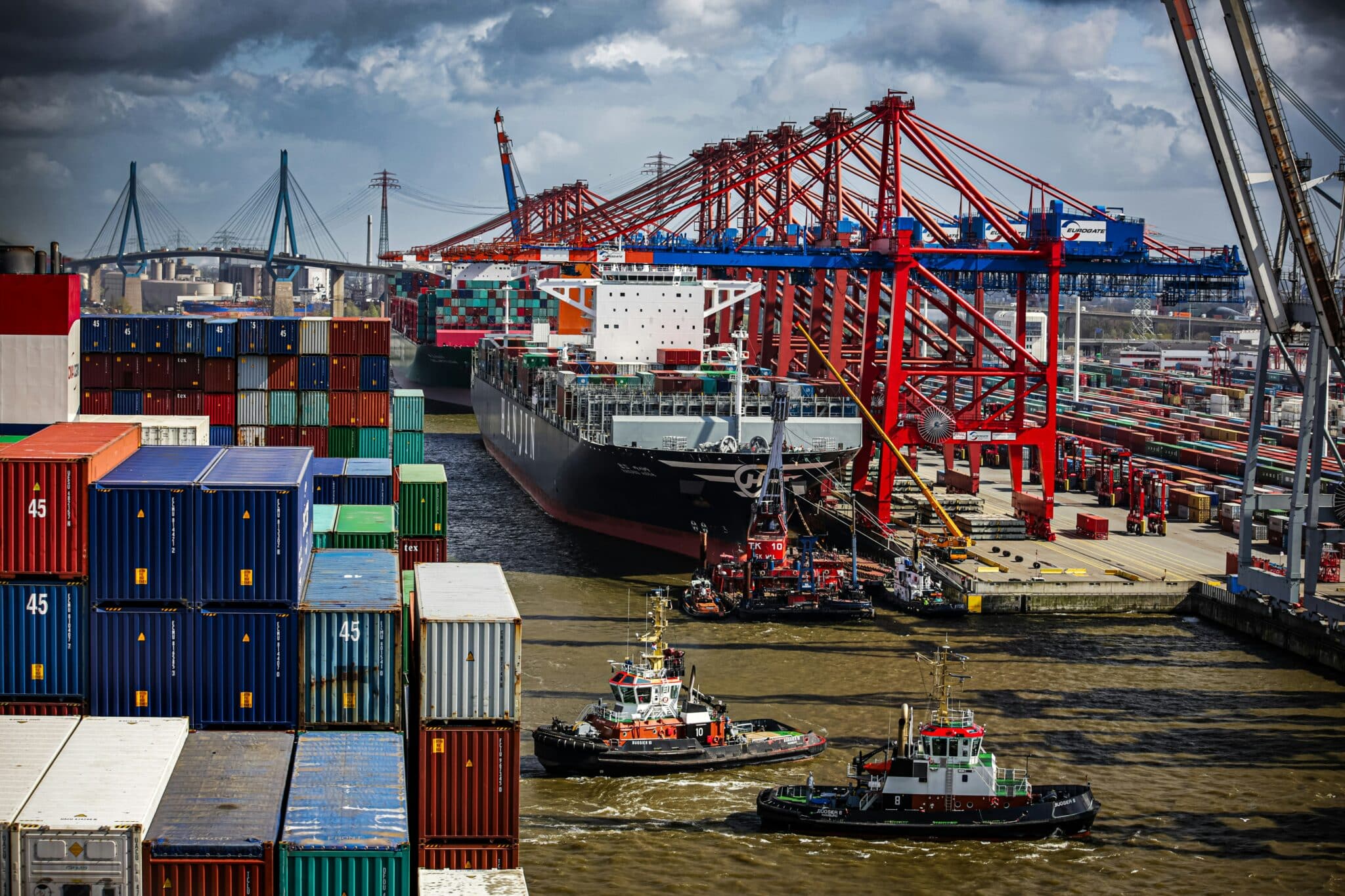Wholesalers can transform their business by mastering accurate inventory forecasting. This guide emphasises the importance of precise predictions, outlines key components for wholesalers, identifies challenges, recommends strategies, and underscores the far-reaching benefits of accurate forecasting for optimised inventory, profitability, customer satisfaction, and efficient supply chain management.
Accurate inventory forecasts are a game-changer, not just for optimising stock levels and minimising costs, but also for boosting customer satisfaction and fueling long-term business growth. Think about it: happy customers receive their orders on time, leading to increased loyalty and repeat business. Meanwhile, efficient inventory management reduces storage costs, frees up working capital, and allows you to invest in other areas for growth.
But how do you achieve such forecasting mastery? Let’s delve into the world of wholesale inventory forecasting.
What is Inventory Forecasting
Let’s start by addressing what inventory forecasting is. Inventory forecasting, also known as demand planning, is the process of predicting the amount of inventory a business will need to meet future customer demand. It’s essentially trying to figure out how much stock to have on hand at any given time to avoid stockouts (running out of inventory) and minimise excess inventory that ties up cash and storage space.
Here’s a breakdown of the key points:
Purpose: Predict future demand for products to optimise inventory levels.
Benefits:
- Prevents stockouts and lost sales.
- Reduces storage costs associated with excess inventory.
- Improves overall supply chain efficiency.
Process:
- Analyse historical sales data to identify trends and patterns.
- Consider factors like seasonality, promotions, and economic conditions.
- Use various forecasting methods (e.g., statistical analysis, machine learning).
- Continuously monitor and adjust forecasts as needed.
What are the key components of accurate forecasting?
While the core principles of inventory forecasting apply to all businesses, wholesalers have specific considerations that require additional components in their forecasting approach. Here are some key components of forecasting for wholesalers:
1. Deep customer understanding:
Wholesalers need to understand not just their own historical sales data but also the demand patterns of their retail clients. This involves insights into factors like:
- Customer segmentation: Grouping retailers based on size, product focus, and buying behaviour allows for tailored forecasts.
- Promotional calendars: Understanding upcoming promotions and events at retailers can significantly impact demand for specific products.
Collaborative planning, forecasting, and replenishment (CPFR): This practice involves working closely with retailers to jointly develop forecasts and optimise inventory levels across the supply chain.
2. Focus on lead times:
Wholesalers typically deal with longer lead times compared to retailers due to bulk ordering and complex logistics. This necessitates:
- Accurate lead time data: Knowing the time it takes to receive goods from suppliers is crucial for factoring lead times into forecasts to avoid stockouts.
- Safety stock management: Maintaining an appropriate level of safety stock helps buffer against unexpected demand fluctuations and delays during the lead time.
3. Market intelligence:
Wholesalers benefit from considering broader market trends beyond just their immediate customers. This includes:
- Industry trends: Monitoring trends in the industry they operate in helps anticipate changes in consumer preferences and product demand.
- Economic indicators: Understanding broader economic factors like inflation, interest rates, and consumer confidence can provide insights into potential shifts in buying behaviour.
4. Flexibility and adaptability:
The wholesale environment is dynamic, and unforeseen events can disrupt demand patterns. Therefore, it’s crucial for wholesalers to have:
- Agile forecasting processes: The ability to quickly adjust forecasts based on new information and changing market conditions is essential.
- Scenario planning: Considering different potential scenarios and their impact on demand helps wholesalers prepare for various situations.
By incorporating these key components into your forecasting approach, you can improve their accuracy, optimise inventory levels, and make better decisions about purchasing, pricing, and resource allocation.
What’s holding you back from accurate forecasting?
Data! From historical sales figures to real-time transaction feeds to analyses of external market trends, accurate forecasting hinges on leveraging diverse information. Correctly combining and crunching multiple varied data sources can supercharge your ability to forecast accurately.
As a wholesaler, you’re likely using an enterprise resource planning (ERP) system and there’s no doubt it’s a valuable repository of well-organised historical data. But here’s the catch, most ERPs lack strong forecasting tools, leaving you to struggle with cumbersome spreadsheets to address complex forecasting requirements. If your master spreadsheet is now a monster spreadsheet, you need to leverage data more effectively to take your forecasting to the next level.
Excel limits your ability to forecast accurately
Spreadsheets may seem like a convenient option for inventory forecasting, but they have limitations that can hinder your business’s growth. As your data size and complexity increase, Excel struggles to handle the workload, leading to performance issues and errors. Additionally, manual data updates and version control challenges make collaboration difficult and error-prone. Furthermore, spreadsheets lack advanced features like sophisticated forecasting models and integration with external data sources, limiting the accuracy and scope of your forecasts. These limitations can become increasingly problematic as your business scales, making it crucial to consider more robust solutions for managing your inventory forecasting needs.
You need more than an ERP
While Enterprise Resource Planning (ERP) systems offer inventory management tools, their forecasting capabilities have limitations. ERPs often rely on a single, rigid model, which can struggle to accurately predict demand for unique or variable inventory. Additionally, some systems struggle with seasonal fluctuations and trends, potentially resulting in inaccurate forecasts. Furthermore, integrating ERPs with other data sources can be challenging, leading to delays and errors. Lastly, implementing and maintaining ERP forecasting features requires significant effort and expertise, with ongoing adjustments necessary to keep pace with evolving business needs.
How to improve forecasting accuracy for wholesalers?
Predicting demand accurately is a cornerstone of success in any business, and the wholesale industry is no exception. There are 3 key areas to achieving greater forecasting accuracy that wholesalers ofen overlook or struggle to make happen.
- Harnessing the power of data
- Selecting the most suitable forecasting technique
- Leveraging automation
By implementing these strategies, wholesalers can move beyond simply crunching numbers and unlock the true power of data-driven demand forecasting. This paves the way for strategic inventory planning and long-term growth, ensuring accurate forecasts to fuel lasting success.
Download these resources to learn more about how to forecast accurately and gain a competitive edge in the wholesale market.
Why is accurate forecasting important to wholesalers?
Beyond mere predictions, precise forecasting equips wholesalers with a strategic advantage, influencing everything from inventory management to profitability and customer satisfaction. Let’s unravel the significance of accurate forecasting for wholesalers and explore the far-reaching benefits.
1. Optimised Inventory Levels:
Accurate forecasts allow wholesalers to strike a balance between:
- Having enough stock to meet customer demand: Prevents stockouts which lead to lost sales and customer dissatisfaction.
- Avoiding excess inventory: Reduces carrying costs associated with storing unsold goods, including storage space, insurance, and potential spoilage.
2. Improved Profitability:
By minimising both stockouts and excess inventory, accurate forecasting directly contributes to increased profitability for wholesalers. You can:
- Negotiate better deals with suppliers: Knowing future demand allows for bulk purchasing and potentially securing better pricing from suppliers.
- Reduce waste and obsolescence: Accurate forecasts minimise the risk of ordering unnecessary inventory that may become obsolete or expire.
3. Enhanced Customer Satisfaction:
Wholesalers who can consistently fulfil customer orders on time and in full experience:
- Increased customer satisfaction: Reliable product availability strengthens relationships with retailers and fosters trust.
- Reduced customer churn: Consistent fulfilment reduces the likelihood of customers switching to other wholesalers due to stockouts.
4. Efficient Supply Chain Management:
Accurate forecasts enable wholesalers to:
- Plan logistics and transportation effectively: Knowing future demand helps optimise delivery schedules and resource allocation.
- Collaborate efficiently with retailers: Sharing accurate forecasts with retailers allows for smoother coordination and reduces the bullwhip effect, where small fluctuations in demand at the retail level are amplified throughout the supply chain.
5. Improved Decision-Making:
Accurate forecasts provide valuable insights into future market trends and demand patterns, allowing wholesalers to:
- Make informed purchasing decisions: Based on anticipated demand, you can strategically choose which products and quantities to order.
- Adapt to changing market conditions: Proactive planning based on forecasts helps wholesalers adjust their strategies and offerings to respond to market shifts and unexpected events.
Conclusion
Accurate forecasting is more than predicting numbers; it’s foreseeing opportunities and steering toward success. It’s a dynamic process, requiring continuous improvement, data-driven insights, and a commitment to transparency. Whether refining approaches, leveraging technologies, or fostering a learning culture, accurate forecasting propels wholesale businesses toward a future defined by resilience and strategic foresight. It isn’t just a destination; it’s an ongoing pursuit, shaping a wholesale business that is efficient, resilient, and strategically foresighted.




